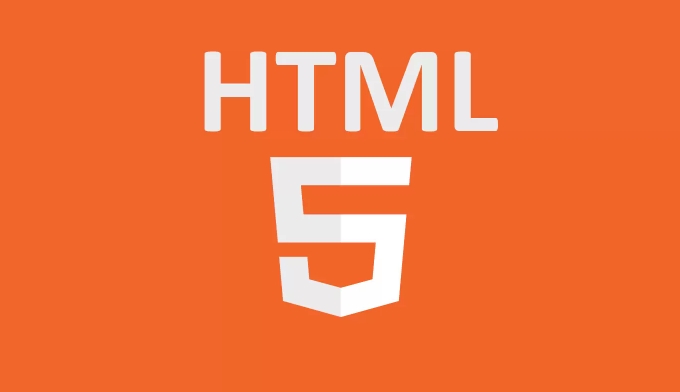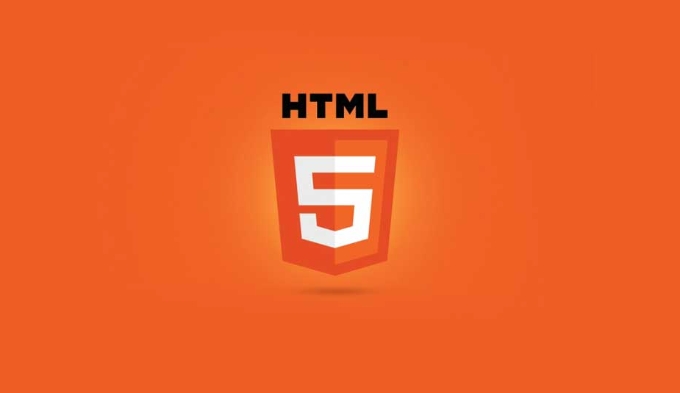1. Support multi-element drag and hold relative positions, record element position information and reposition it when dragging and dropping; 2. Customize and drag "shadow" elements, use the setDragImage method to improve visual feedback; 3. Realize cross-window/tab page drag and drop communication, and pass structured data through dataTransfer; 4. Combined with barrier-free support, provide alternative operation methods and ARIA attribute annotations, thereby improving usability and inclusion.

In modern web development, HTML5's Drag and Drop API is a very practical function that can be used to implement interactions such as drag and drop elements, upload files, and sorting components. But many people just stay at the basic usage level. In fact, it also has some advanced usage and skills that can take your application experience to a higher level.

Let’s take a look at several common advanced usage scenarios and techniques to help you better master the H5 drag and drop API.
Supports multi-element drag and hold relative position
Sometimes we want to drag multiple elements at once and keep them in relative positions when placed. For example, select multiple graphics in a canvas editor to move them.

To achieve this effect, the key is to record the positional relationship of the dragged element:
- In the
dragstartevent, record the location information of all selected elements (such as the position relative to the container) - Calculate mouse position in
dragoveranddropand reposition each element according to the original offset
This method is suitable for layout editors or visual design tools, which can greatly improve operational efficiency.

Custom drag and drop the "shadow" element (Drag Image)
By default, the browser generates a translucent "shadow" for the dragged element, but this may not be intuitive enough or in line with the UI style.
You can customize the visual feedback during dragging and dropping through setDragImage method:
event.dataTransfer.setDragImage(customElement, offsetX, offsetY);
-
customElementcan be any DOM element, such as a custom div or canvas -
offsetXandoffsetYcontrol the position of the cursor relative to the element
This is very useful when implementing complex UI components (such as kanbans, chart nodes), allowing users to know more clearly what is currently dragging.
Implement cross-window/tab page drag-and-drop communication
H5's drag and drop API is not limited to the inside of the page, but can also be used for data transfer between different windows. For example, drag from one editor window to another preview window.
The key to implementation is to use dataTransfer.setData() to pass string data, and the receiver gets it through dataTransfer.getData() :
- Sender: Set data in text, URL, HTML and other formats
- Receiver: Listen to
dropevents and parse data in the corresponding format
Note: Due to security restrictions, DOM nodes cannot be passed directly between cross-domain windows, but structured text (such as JSON strings) can be passed and then rebuilt on the target page.
Combined with drag and accessibility support
While the drag and drop function is cool, it is not friendly to keyboard users and screen reader users. Therefore, when implementing the drag and drop function, you should also consider accessibility:
- Provide alternative operations such as button control sorting or moving
- Use the ARIA attribute to label draggable areas, such as
draggable="true"andaria-grabbed - Update status description during dragging and dropping, facilitate screen readers to broadcast
Although these practices seem to be "extra work", they can significantly improve product availability and inclusion.
Basically that's it. Although the Drag and Drop API of HTML5 is simple in basics, after using it in depth based on actual needs, you will find that it can bring many flexible interaction methods. Just pay attention to compatibility, user experience and accessibility issues to create a powerful and friendly interface.
The above is the detailed content of Advanced H5 Drag and Drop API Usage Patterns. For more information, please follow other related articles on the PHP Chinese website!

Hot AI Tools

Undress AI Tool
Undress images for free

Undresser.AI Undress
AI-powered app for creating realistic nude photos

AI Clothes Remover
Online AI tool for removing clothes from photos.

Clothoff.io
AI clothes remover

Video Face Swap
Swap faces in any video effortlessly with our completely free AI face swap tool!

Hot Article

Hot Tools

Notepad++7.3.1
Easy-to-use and free code editor

SublimeText3 Chinese version
Chinese version, very easy to use

Zend Studio 13.0.1
Powerful PHP integrated development environment

Dreamweaver CS6
Visual web development tools

SublimeText3 Mac version
God-level code editing software (SublimeText3)

Hot Topics
 Adding drag and drop functionality using the HTML5 Drag and Drop API.
Jul 05, 2025 am 02:43 AM
Adding drag and drop functionality using the HTML5 Drag and Drop API.
Jul 05, 2025 am 02:43 AM
The way to add drag and drop functionality to a web page is to use HTML5's DragandDrop API, which is natively supported without additional libraries. The specific steps are as follows: 1. Set the element draggable="true" to enable drag; 2. Listen to dragstart, dragover, drop and dragend events; 3. Set data in dragstart, block default behavior in dragover, and handle logic in drop. In addition, element movement can be achieved through appendChild and file upload can be achieved through e.dataTransfer.files. Note: preventDefault must be called
 Handling reconnections and errors with HTML5 Server-Sent Events.
Jul 03, 2025 am 02:28 AM
Handling reconnections and errors with HTML5 Server-Sent Events.
Jul 03, 2025 am 02:28 AM
When using HTML5SSE, the methods to deal with reconnection and errors include: 1. Understand the default reconnection mechanism. EventSource retrys 3 seconds after the connection is interrupted by default. You can customize the interval through the retry field; 2. Listen to the error event to deal with connection failure or parsing errors, distinguish error types and execute corresponding logic, such as network problems relying on automatic reconnection, server errors manually delay reconnection, and authentication failure refresh token; 3. Actively control the reconnection logic, such as manually closing and rebuilding the connection, setting the maximum number of retry times, combining navigator.onLine to judge network status to optimize the retry strategy. These measures can improve application stability and user experience.
 Getting user location with HTML5 geolocation API
Jul 04, 2025 am 02:03 AM
Getting user location with HTML5 geolocation API
Jul 04, 2025 am 02:03 AM
To call GeolocationAPI, you need to use the navigator.geolocation.getCurrentPosition() method, and pay attention to permissions, environment and configuration. First check whether the browser supports API, and then call getCurrentPosition to obtain location information; the user needs to authorize access to the location; the deployment environment should be HTTPS; the accuracy or timeout can be improved through configuration items; the mobile behavior may be limited by device settings; the error type can be identified through error.code and given corresponding prompts in the failed callback to improve user experience and functional stability.
 Understanding the autoplay policy changes affecting HTML5 video.
Jul 03, 2025 am 02:34 AM
Understanding the autoplay policy changes affecting HTML5 video.
Jul 03, 2025 am 02:34 AM
The core reason why browsers restrict the automatic playback of HTML5 videos is to improve the user experience and prevent unauthorized sound playback and resource consumption. The main strategies include: 1. When there is no user interaction, audio automatic playback is prohibited by default; 2. Allow mute automatic playback; 3. Audio videos must be played after the user clicks. The methods to achieve compatibility include: setting muted properties, mute first and then play in JS, and waiting for user interaction before playing. Browsers such as Chrome and Safari perform slightly differently on this strategy, but the overall trend is consistent. Developers can optimize the experience by first mute playback and provide an unmute button, monitoring user clicks, and handling playback exceptions. These restrictions are particularly strict on mobile devices, with the aim of avoiding unexpected traffic consumption and multiple videos
 Using ARIA attributes with HTML5 semantic elements for accessibility
Jul 07, 2025 am 02:54 AM
Using ARIA attributes with HTML5 semantic elements for accessibility
Jul 07, 2025 am 02:54 AM
The reason why ARIA and HTML5 semantic tags are needed is that although HTML5 semantic elements have accessibility meanings, ARIA can supplement semantics and enhance auxiliary technology recognition capabilities. For example, when legacy browsers lack support, components without native tags (such as modal boxes), and state updates need to be dynamically updated, ARIA provides finer granular control. HTML5 elements such as nav, main, aside correspond to ARIArole by default, and do not need to be added manually unless the default behavior needs to be overridden. The situations where ARIA should be added include: 1. Supplement the missing status information, such as using aria-expanded to represent the button expansion/collapse status; 2. Add semantic roles to non-semantic tags, such as using div role to implement tabs and match them
 Securing HTML5 web applications against common vulnerabilities
Jul 05, 2025 am 02:48 AM
Securing HTML5 web applications against common vulnerabilities
Jul 05, 2025 am 02:48 AM
The security risks of HTML5 applications need to be paid attention to in front-end development, mainly including XSS attacks, interface security and third-party library risks. 1. Prevent XSS: Escape user input, use textContent, CSP header, input verification, avoid eval() and direct execution of JSON; 2. Protect interface: Use CSRFToken, SameSiteCookie policies, request frequency limits, and sensitive information to encrypt transmission; 3. Secure use of third-party libraries: periodic audit dependencies, use stable versions, reduce external resources, enable SRI verification, ensure that security lines have been built from the early stage of development.
 Integrating CSS and JavaScript effectively with HTML5 structure.
Jul 12, 2025 am 03:01 AM
Integrating CSS and JavaScript effectively with HTML5 structure.
Jul 12, 2025 am 03:01 AM
HTML5, CSS and JavaScript should be efficiently combined with semantic tags, reasonable loading order and decoupling design. 1. Use HTML5 semantic tags, such as improving structural clarity and maintainability, which is conducive to SEO and barrier-free access; 2. CSS should be placed in, use external files and split by module to avoid inline styles and delayed loading problems; 3. JavaScript is recommended to be introduced in front, and use defer or async to load asynchronously to avoid blocking rendering; 4. Reduce strong dependence between the three, drive behavior through data-* attributes and class name control status, and improve collaboration efficiency through unified naming specifications. These methods can effectively optimize page performance and collaborate with teams.
 Declaring the correct HTML5 doctype for modern pages.
Jul 03, 2025 am 02:35 AM
Declaring the correct HTML5 doctype for modern pages.
Jul 03, 2025 am 02:35 AM
Doctype is a statement that tells the browser which HTML standard to use to parse the page. Modern web pages only need to be written at the beginning of the HTML file. Its function is to ensure that the browser renders the page in standard mode rather than weird mode, and must be located on the first line, with no spaces or comments in front of it; there is only one correct way to write it, and it is not recommended to use old versions or other variants; other such as charset, viewport, etc. should be placed in part.






